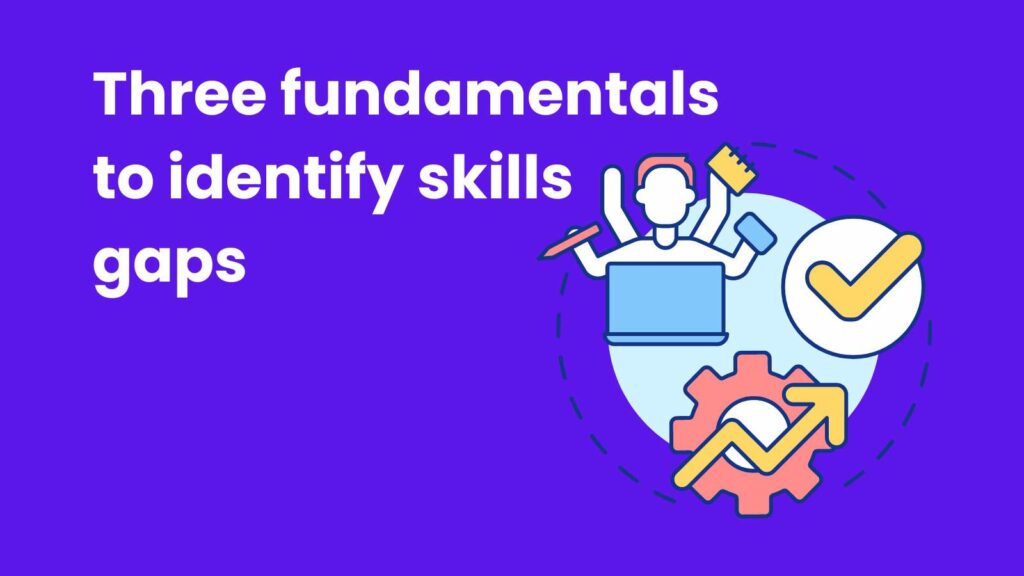Rather than formal skills assessments, which rely on employees’ self-identification, employers can identify skills gaps in the workplace through a holistic, fundamental approach.
To identify skills gaps, employers can follow three simple steps, as recommended by HR professionals and career developers:
1. ESTABLISH THE IDEAL
Employers can take the first step when trying to identify skills gaps in the workplace to establish their ideal work environment. Right off the bat, the employer narrows down what they are looking for in their employees, and they determine how they want their employees to contribute to the company’s goals.
During this initial stage, the employer should ask questions like:
- What is the company’s ultimate mission? What are the company’s core values?
- Which skills and characteristics align with the company’s mission and values?
- What are the company’s short-term and long-term goals for growth?
- Which skills and characteristics are integral to reaching the company’s goals?
- Who are the top employees of the company team? Which of the top performers’ skills and characteristics stand out the most?
- What are the best practices and habits for workflow within this unique company?
Answering these fundamental questions will establish the ideal workplace for the organization to aspire towards.
The employer must keep in mind the company’s mission and values in order to identify the most crucial skills missing from the team. Every organization has a diverse set of individuals, all working together to achieve a collaborative company mission. Thus, considering that mission and the company’s core values is essential to developing employees who embody company values and genuinely care about achieving the mission.
More importantly, it is essential that the employer keeps in mind the company culture’s unique qualities to answer the question of ‘best practices honestly.’ Essentially, the ideal for one organization should never match the ideal for another because each should reflect their uniqueness and diversity as an organization.
2. ESTABLISH THE REALITY
Having established the ideal workplace, employers can move to implement it into the reality of their current workplace.
The employer should ask questions like:
- How does the company team collaborate with one another? Do they effectively combine their skills to produce results collectively?
- What are the work habits of the company team, both individually and collaboratively?
- Are there departments or specific deliverables that tend to be less successful than others? If so, which skills do those departments or deliverables require?
- Generally speaking, which skills and characteristics do the team and individual employees demonstrate?
After answering these questions, the employer will have established the reality of their workplace situation. Most importantly, they will have identified key skills and habits that the team uses to deliver results.
3. COMPARE THE IDEAL WITH THE REALITY
The final step in identifying skills gaps in the workplace is a comparative analysis. The employer sits down to compare the ideal workplace conditions to the real workplace conditions. With these established ideals and realities side by side, the employer can identify areas of weakness in departments and the larger company team.
Comparing the ideal skills with the real abilities will accurately reveal which skills are necessary to complete tasks. For example, if employees are completing tasks without the employer’s ideal skills and characteristics, then the employer should reconsider the necessity of those skills.
Moreover, the employer can identify which departments are struggling to meet expectations most and then consider why that is. For example, are there cross-departmental barriers or silos blocking the team from accomplishing tasks efficiently? Is the weaker department struggling to communicate or negotiate their decisions?
The employer will also be able to compare the employees’ characteristics with that of the company mission and values: is the team embodying the core values while working towards the mission?
The employer can also compare the top performers’ characteristics with that of the rest of the team. Which skills do the top performers have that make them stand out from the rest?
This comparative analysis will reveal the active skills gaps within the organization. After this process, the employer can then move to identifying their next steps and how they can build and bridge these missing skills for the company’s growth.

